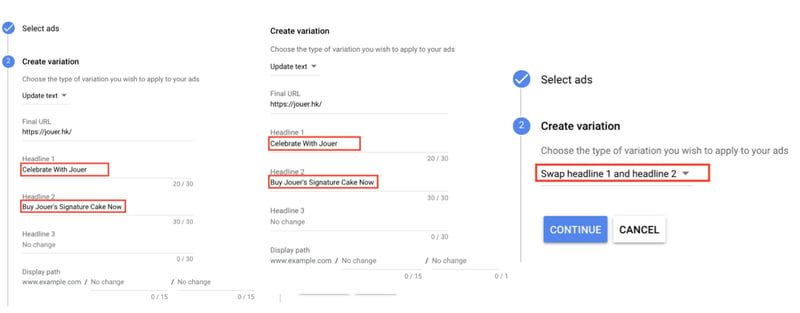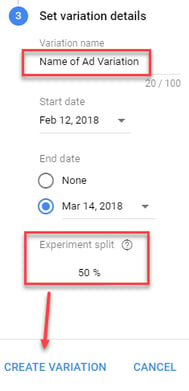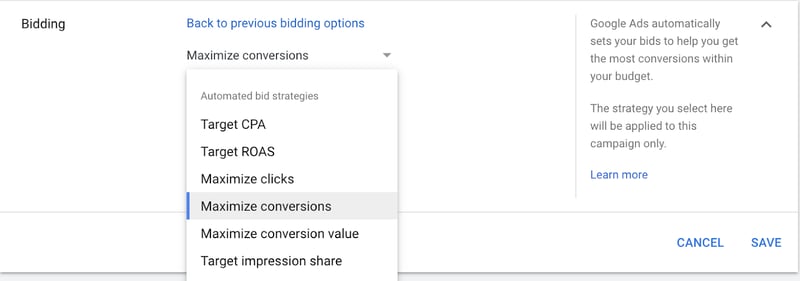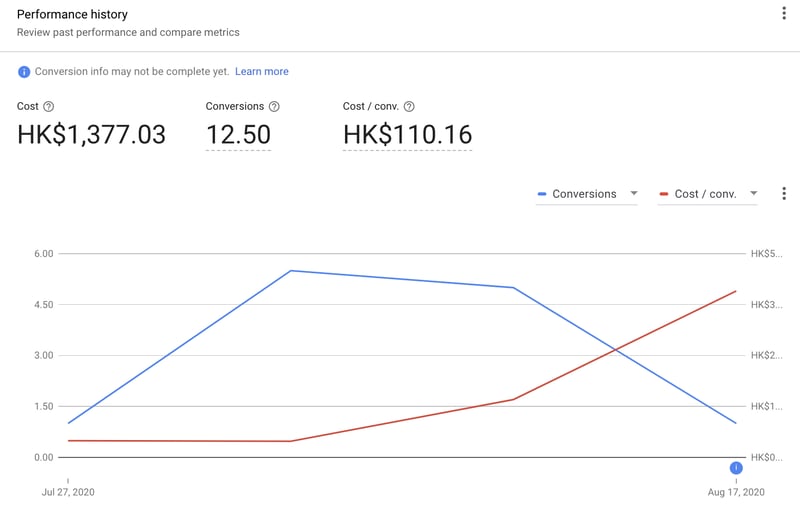A/B testing is an effective tool that helps you test and evaluate your campaign with an alternate set of settings through running experiments without altering the existing campaign. If you are a small business, this means you don’t need to invest extra money as it simultaneously gathers more knowledge with each ad campaign with split budgets. Well-planned and organised A/B testing can make your marketing efforts more profitable and successful.
With Google Ads, you can activate a new draft as an experiment to allow you to compare its performance with the original campaign over time. You can follow Google’s step-by-step guide to create your Experiment to start running experiments co-currently without extra ad spending.
A/B testing is not an overnight project. Depending on the amount of traffic you get, you should range the span of your experiment anywhere from a few days to a couple of weeks. And you’ll only want to run one test at a time for more accurate results. It’s important to have a plan and hypothesis, knowing exactly what you want to test for, and run the analysis along with the testing.
Practical and effective tactics to carry out A/B testing on Google Ads
When it comes to your Google ads, a common goal is to boost the click through rate (CTR). You can make use of Google Ads Variation to begin experimenting with your ad copies.
1. Headline
Your headline is the first thing people will notice when they come across your text ad. A/B testing using Swap Headlines gives you the opportunity to test out different variations of headlines you’ve had in mind. You can test out your CTA (call to action) placement, try including your brand name, or a promotional message in the headline to boost clicks.
2. Ad Description
With A/B testing, you can test different approaches for communicating your business’ value proposition in the description. With Update Text and Find and Replace, you can try swapping out an entire description to test whether benefits are worth focusing on rather than features in your ad copy. You can also test out adding a CTA into your description, highlighting unique selling points, key features and promotional content to increase traffic and boost your click through rate.
3. Display URL and Landing Page
Shortening your display URL or sometimes lengthening it can also be a contributing factor to whether your click through rate improves. Ensuring that your landing page correlates with your target audience’s needs is important too. A/B testing with Google Ads will give you the chance to test this easily and reap results within your preferred time frame.

Establish testing process details
Besides figuring out which ad variant to use, you’ll also have to establish the details of your testing process. Some effective and practical suggestions for running your experiment would be to:
- when choosing what to name your variant, use a name that explicitly refers to your test
- ensuring that your start and end date for your variant is at least two weeks to give your ads some time to accrue impressions and lastly
- be aware that your experiment split depends on your advertising budget, so adjust the split accordingly.

Gauging the performance of your ad variation can be done by looking at the interface in which you created your experiment. From there you can analyze your results, it allows you to see clicks, impressions, CTR, cost and average CPC. And finally if you deem the results of your ad variation successful, you can actually replace your existing ads by clicking “Apply” the winning Ad copies.

Another point worth mentioning, besides utilising Google Ads Variations, you can also try creating Responsive Search Ads in your campaigns, Google’s machine learning uses real time data to find out the best combinations of headlines and description lines that will give you higher conversions. Check out our previous blog where we talk about taking advantage of Responsive Search Ads to further optimize your Google Ads.
Bidding Method A/B Testing
Google Ads A/B testing also gives you the perfect opportunity to test new budding strategies. Before diving into how the experiment can help you optimise your ads, below is a brief overview of the bidding options available:

Enhanced CPC gives Google the ability to increase or decrease your bid amount based on the likelihood of driving a sale (conversion), keeping bids within your max CPC restrictions.
Maximize Clicks has a goal of increasing site visits. Opting this will allow Google to automatically set your bids to help get as many clicks as possible within your budget.
Target CPA will help you get more conversions within your target CPA. Bids will be set automatically to obtain as many conversions as possible within your target CPA.
Target ROAS helps you get as many conversions as possible at the target ROAS you set. This is helpful when each conversion is valued differently.
Maximize Conversions will automatically set bids to help you get the most conversions for your campaign while spending your budget.
Different campaigns have different objects, therefore it’s important to determine the goal of your campaign before testing the bidding strategies. Generally, for sales driven campaigns, you’re often looking at specific metrics such as the conversion and revenue number. For example, if experiment A has low cost per conversion (CPC) but no conversion and experiment B has high cost per conversion and a high conversion, experiment B is definitely the better choice for sales driven campaigns. Whereas if the campaign objective is to reach more audience, you’re more likely to be looking at the number of clicks.
Running A/B tests are exceptional when trying to figure out your optimal bidding strategy. A highlight is that you won’t have to go through the learning phase of each automated bidding one by one. The shift to automated bidding might bring some unpredictable and negative performance for the first few weeks. However, with the ability of setting the experiment split to be fairly low, you can let it go through the learning phase with minimal damage. One thing to look out for is to set a maximum bid limit, this is to avoid extremely high CPCs on certain search terms. When everything goes as planned and results look prime, you can apply the chosen bidding strategy to your campaign.
To check on the performance of your experiment, it’s crucial to review the bid strategy report. Here you can check on the status of your bid strategy (the “learning” period), how it has been performing and a history of changes to targets. However, this is only available for certain strategies like Target CPA and Target ROAS.

With the help of Google Ads’ Variation feature to run A/B testing on your ads, it has never been easier to determine your top performing ad creative and continuously test some more. Seizing the opportunity with A/B testing will also help minimize the pain of overspending your advertising budget and keep optimizing your campaign performance.
Make sure to check out our previous blogs - Further Optimizing Your Google Ad Campaign and Google Ads Latest Updates. If you are interested in learning more about A/B Testing on Google Ads, get in touch with our eCommerce and digital marketing expert now!

